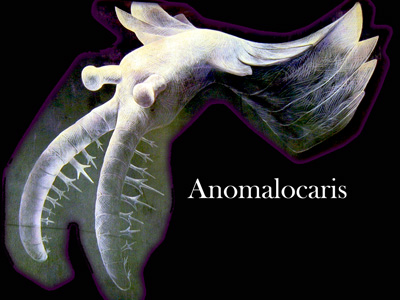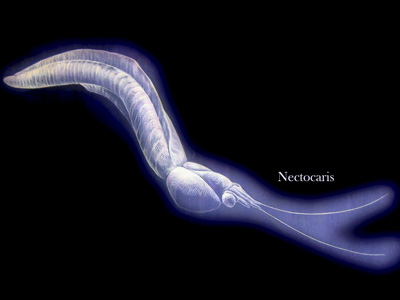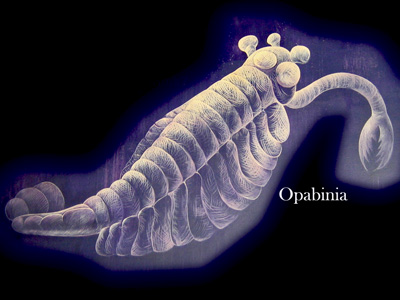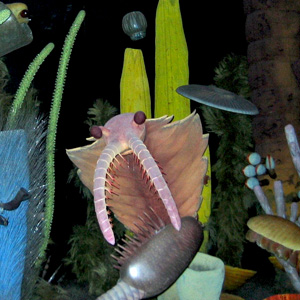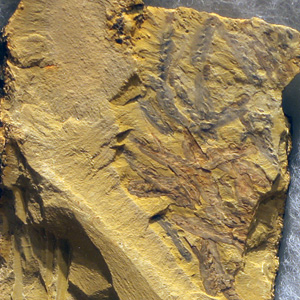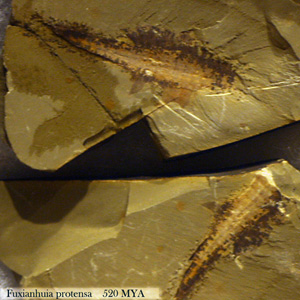| The Cambrian Explosion | ||
|
|
The Cambrian Explosion marks the end of the Proterozoic Eon (2.5 billion years ago to 543 million years ago) and the Ediacaran Era (635 to 542 million years ago). It launches the beginning of the Phanerozoic Eon, the Paleozoic Era, and the Cambrian Period. In a period of merely 10 million years, give or take a few million, all the basic body plans for animals suddenly appeared. The Burgess Shale deposit in the Canadian Rocky Mountains is full of excellent fossils from this period, when trilobites, mollusks, echinoderms, and many other creatures appeared. One theory suggests that Oxygen levels increased in the oceans, and predators evolved. The invention of predation perhaps caused the extinction of much of the Ediacaran fauna, and the evolutionary innovations that caused the explosion can be traced to the evolutionary race between predators and prey. It also seems that many forms that first appear in the fossil record in the Cambrian explosion probably had evolved in the Ediacaran or earlier, but were not abundant or were simply not preserved in any fossil record to which we now have access. Some of the strange fossils in the early Cambrian rocks that people thought might represent entirely strange sorts of animals without any close relatives in later periods are now recognized to be unusual forms of more prosaic creatures. The spiky Hallucigenia, for example, is now understood to have been a sort of velvet worm. |
||
Links about the Cambrian Explosion:
|
Articles of biology: trilobite, prokaryote, oxygen catastrophe, Metazoa, eukaryote, Ediacaran. |
||
Articles of French history:Eiffel tower, Louvre, Versailles, Notre-Dame de Paris, Paris Opera house. Articles of Chinese history: oil well, abacus, compass, gunpowder, first dictionary, paper money, wheelbarrow. |
||
| Back to the World History Timeline in English | ||
| Back to the Historylines home page. | ||
|
